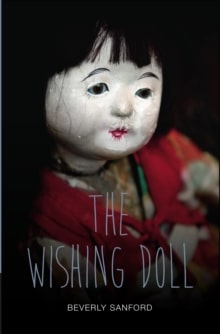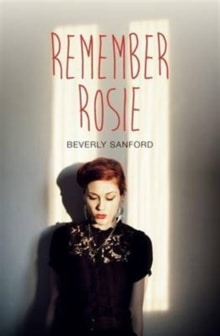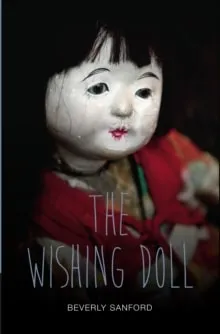November 5, 2024
At Renaissance, we love hi-lo books, titles that have low reading levels but have themes that engage older readers. We invited hi-lo author and AR quiz writer Beverly Sanford to share her experiences writing this type of book. This October celebrates the 10th anniversary of the publishing of Bev’s first book, The Wishing Doll. You can find quiz information at the end of this blog.
How did you first get into writing hi-lo books?
I discovered that hi-lo books existed when I began working for Renaissance as a freelance quiz writer in 2006. I liked quizzing them, as they blend gripping stories with succinct writing in a shorter-length book. I also enjoyed the stories that they lent themselves to, like horror, teen drama, and essential topics like mental health.
topics like mental health.
The chance to write my first hi-lo book happened in 2014. I was studying writing for children under the guidance of the brilliant author, Lou Kuenzler, and trying to write middle-grade fiction. Some friends had written for Badger Learning’s Teen Reads series, and when the next series was being planned, Badger invited me to pitch.
I hadn’t attempted to write for teens before that, so I wasn’t sure if I could do it, but I gave it my best shot. I was so thrilled when Badger accepted my pitch for what became my first published book, The Wishing Doll.
What helped me to write that book, and subsequent hi-lo titles for Badger and Pearson, was the experience I’d had writing Accelerated Reader quizzes on similar books. Without realising, I’d developed a knowledge of the structure and vocabulary, which made writing them feel natural.
How do you get your ideas for your stories? Do you get to choose?
The lovely thing about the hi-lo books I’ve written so far is that my publishers have encouraged me to write stories I want to tell. I was keen to write about both homophobia and a dystopian future for Badger’s Teen Reads. Pearson let me write about motor racing, sinister technology, and Body Dysmorphic Disorder for Rapid Plus. My upcoming hi-lo book is a fictional tale about young women in sports, something I’d hoped to write for years, and Badger kindly said yes.
My ideas come from everywhere. I have notebooks and scraps of paper filled with things I want to write; just about everything inspires me. The downside is that I don’t have time to write them all!
What is your favourite thing about writing hi-lo books?
I really like the fact that gripping stories and important topics can be presented in this way for readers who are ready for a strong story but feel more comfortable with the support of a clear story structure and a less complicated reading level.
As someone who was lucky enough to be able to read before I went to school, I can only begin to understand the challenges faced by emerging readers who struggle with it for so many different reasons. I feel very lucky to hopefully be able to contribute to children and young people overcoming those challenges, improving their literacy, and developing a love of reading.
When writing for ‘high-interest, low-level’ readers, what is your biggest struggle?

For me, it’s editing it to fit a word count. I find it hard to make my own stories shorter. When you have a big plot with myriad or complex elements, there’s a lot more room in a regular-length story but in hi-lo, it’s an exercise in learning how to write succinctly and sparsely while including key moments. It’s crucial to make sure it doesn’t become boring or that plot isn’t sacrificed to reduce length.
A recent struggle I encountered was navigating DE&I for my hi-lo books to ensure my stories were inclusive. This was a key learning curve as thanks to the guidance of my editors, I recognised that there were elements in my stories that could be more inclusive. It was a chance to recognise that at my age and with the popular culture I’d absorbed in the 80s and 90s, I had an opportunity to adjust my lens and ensure that I embed more inclusive values and ideologies into my writing for current and future generations.
What advice do you have for aspiring, young writers?
It sounds obvious but read, read, and then read some more! It’s a great way to develop a knowledge of how to write and how to find out what genre or audience you want to write for. Follow your favourite authors online and listen to what they have to say about writing, too; I did a lot of learning by attending talks by authors and screenwriters and it helped me work out what I wanted to write. Joining a writing class is great, too, and having a writing buddy so that you can support each other.
Always write the story that you want to tell or write about something you are passionate about. When we are passionate about something, it shows in our writing and makes it authentic.
Dreaming about doing writing is brilliant, but you have to actually do it! That might be by writing a journal or a poem, or writing ideas, but try to make a habit of writing often. It’s the best way to discover your own unique voice, and your unique voice is what is going to make readers turn the pages when it comes to your stories!
Books by Bev on Accelerated Reader:
Amazing Racing: The World of Formula 1
MY | Quiz #229050 | BL 5.1
Remember Rosie
MY+ | Quiz #229310 | BL 4.1
Social Superstars
MY | Quiz #229253 | BL 6.0
Silent Nation
MY+ | Quiz #231052 | BL 4.1
The Wishing Doll
MY+ | Quiz #227785 | BL 3.3
